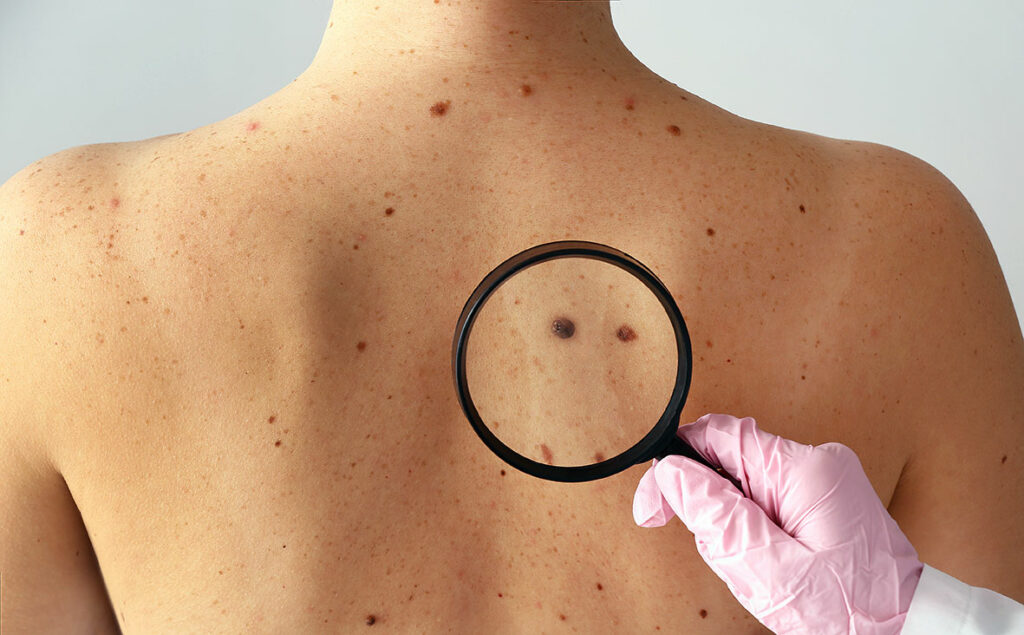Melanoma

Melanoma is a skin cancer that begins in the cells that make pigment in the skin, known as melanocytes. Melanoma is dangerous because of its ability to spread to other organs more rapidly if it is not treated at an early stage. Melanoma occurs when the DNA of the melanocytes is damaged by ultraviolet radiation from the sun or tanning booths, resulting in uncontrolled growth.
Melanoma is usually curable when caught early, and in the United States, the 5 year survival of patients diagnosed with melanoma is 99%. Despite this, over 7,000 patients in the United States will die of melanoma this year.
Most melanomas arise “de novo” on normal appearing skin. Only 20% of melanomas are associated with a pre-existing mole. The most common form of skin develops as an asymmetric patch or slightly raised papule. Usually these melanomas have more than one color and have uneven borders. They most commonly arise on the chest or back of men or the legs of women. Other melanomas arise in chronically sun damaged skin like the face or scalp. These typically arise as dark brown or black, irregularly shaped patches. Some melanomas arise on the hands and feet, under the nails, or even in the mouth. Since there are so many different types of melanoma with various presentations, it is important to perform self exams and come to the doctor with anything suspicious, to ensure prompt diagnosis and treatment of melanoma. When examining your own skin, it can be helpful to follow the ABCDE criteria:
- Asymmetry: a lesion in which one half looks different than the other half is more concerning
- Borders: irregular borders are more concerning
- Color: multiple colors are more concerning
- Diameter: something bigger than the size of a pencil eraser is more concerning
- Evolving: anything new, itching, bleeding, or changing color, shape or size is more concerning
Excision with a good margin around the melanoma is the standard of care for melanoma. In some cases, such as cases on the face or scalp where a wide excision is not possible, Mohs surgery has been shown to be an excellent method for curing melanoma. For advanced melanoma, treatment is usually interdisciplinary, and will involve several doctors coordinating care and working together to develop the best treatment plan.
We Care About You
© 2024 • All Rights Reserved • Juniper Dermatology
